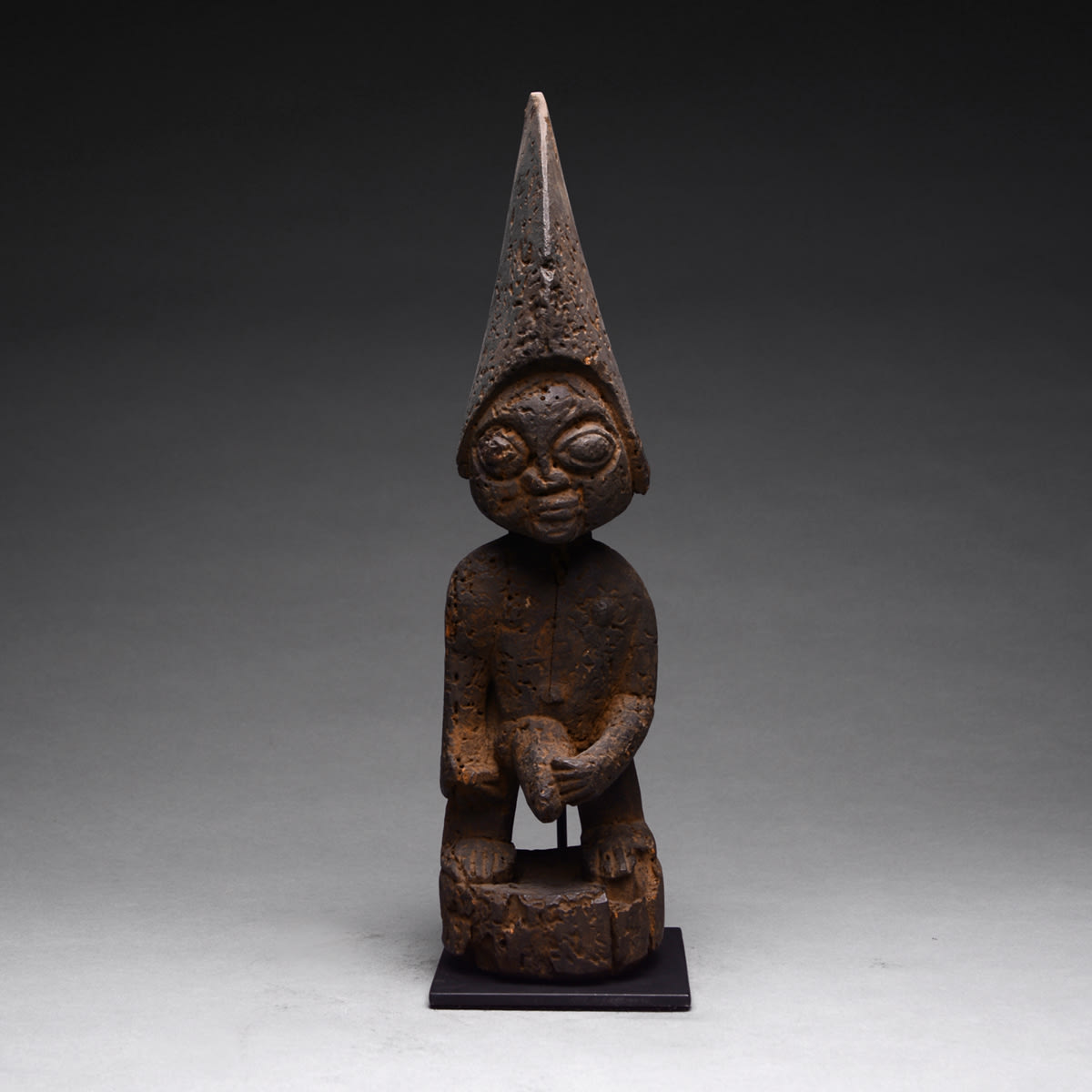Yoruba Wooden Sculpture of Esu, 20th Century CE
Wood
32.4 x 8.3 cm
12 3/4 x 3 1/4 in
12 3/4 x 3 1/4 in
PF.3613
The Yoruba are the largest ethnic group in Africa and are the most prolific of its art-producing peoples. Their art reflects complex systems of religion, social organization, and government, all...
The Yoruba are the largest ethnic group in Africa and are the most prolific of its art-producing peoples. Their art reflects complex systems of religion, social organization, and government, all of which are implemented by special voluntary associations. Moreover, Yoruba culture has a rich spiritual philosophy that has its ancient roots in Nigeria. Such spiritual ideas are often conveyed in Yoruba arts, giving us clues to the ancient thoughts.
This wooden figure represents Esu, the guardian of the ritual way. Esu bestows riches upon those who follow the sacrificial way of life and steals from those who do not acknowledge his authority. Hence, Esu figures are often laden with signs of wealth and power. Especially, the sexual symbolism in the myths and iconography associated with Esu are distinctly shown, as in this sculpture. Standing on a base, this male figure wears a large conical headdress, under which a round, plump face is placed. Its round cheeks seems like the figure is blowing or whistling, adding a distinct character to the sculpture. The most predominant feature is the position of the figure--one hand by his side and the other hand on his exaggerated genitalia. Such overt sexual connotation is a display of power, dominance, and authoritative aggression. This wooden figure is a dramatic historical work of art that undoubtedly stuns our eyes and enriches our minds.
This wooden figure represents Esu, the guardian of the ritual way. Esu bestows riches upon those who follow the sacrificial way of life and steals from those who do not acknowledge his authority. Hence, Esu figures are often laden with signs of wealth and power. Especially, the sexual symbolism in the myths and iconography associated with Esu are distinctly shown, as in this sculpture. Standing on a base, this male figure wears a large conical headdress, under which a round, plump face is placed. Its round cheeks seems like the figure is blowing or whistling, adding a distinct character to the sculpture. The most predominant feature is the position of the figure--one hand by his side and the other hand on his exaggerated genitalia. Such overt sexual connotation is a display of power, dominance, and authoritative aggression. This wooden figure is a dramatic historical work of art that undoubtedly stuns our eyes and enriches our minds.



